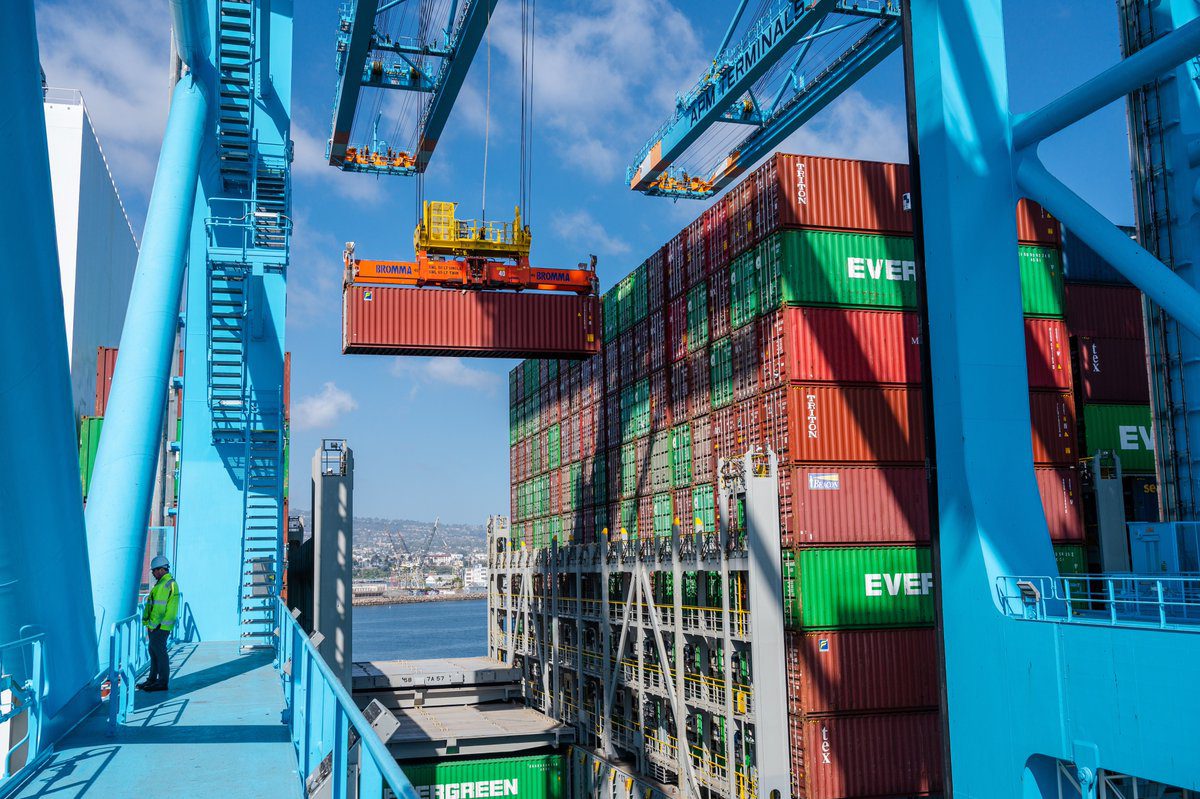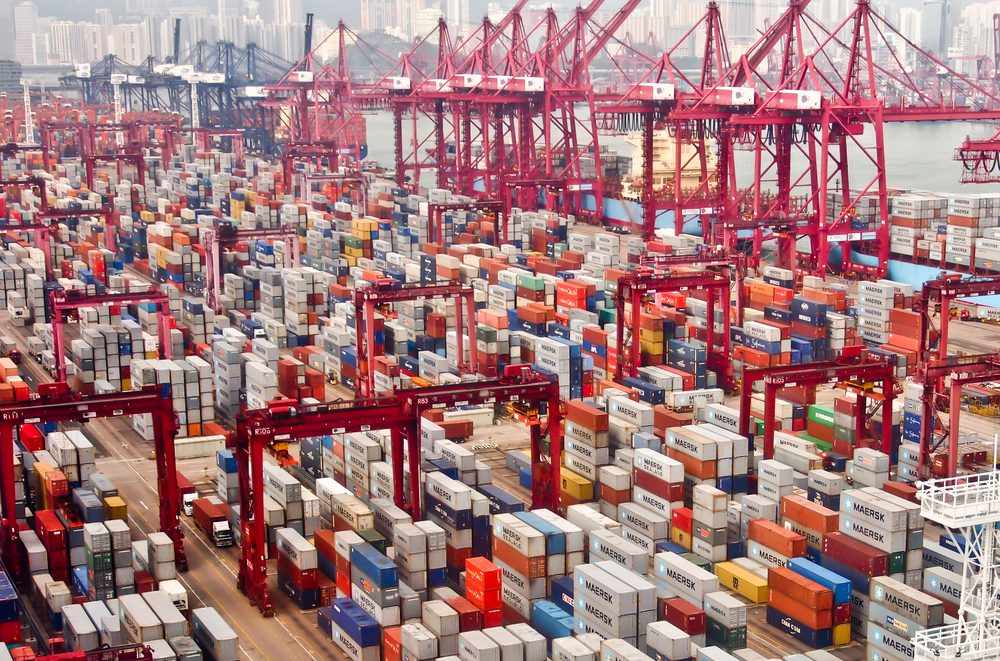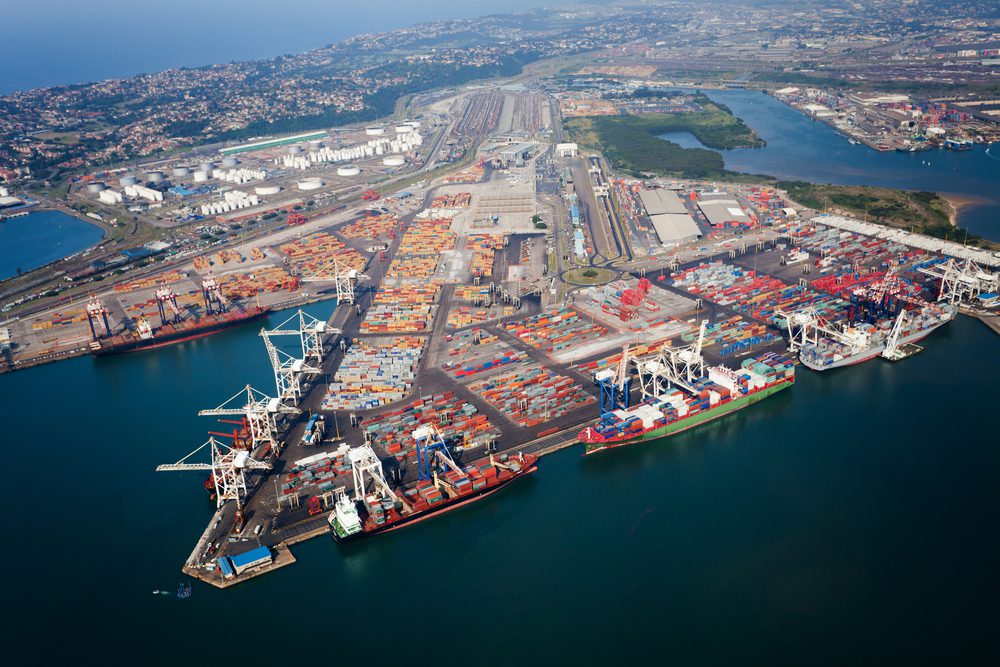By Jennifer Epstein and Josh Wingrove (Bloomberg) —
The Biden administration is trying to relieve supply chain bottlenecks ahead of the U.S. Christmas shopping season, but officials acknowledge their options are limited as soaring consumer demand tests transportation and delivery networks.
Flotillas of cargo ships anchored off major ports and stacks of shipping containers piling up on wharfs have ratcheted up concern that American shoppers may be greeted by empty shelves when the holiday season kicks off next month.
That’s led the White House to accelerate and highlight its efforts to smooth the flow of goods through the economy. Earlier, the Port of Los Angeles — which together with the nearby Long Beach port make up the busiest U.S. container hub — announced that it is moving to begin 24-hour, seven-day-a-week operation after discussions with the administration and labor unions, a step the White House called overdue.
Six companies, including FedEx Corp and United Parcel Service Inc., also committed to expanding their delivery schedules. Biden met with executives from those companies, ports and labor leaders at the White House before his remarks.
“With the holidays coming up, you might be wondering if gifts you plan to buy will arrive on time,” Biden said Wednesday, before reiterating the announcement from the port. “This is the first key step for moving our entire freight-transportation and logistical supply chain nationwide to a 24-hour system.”
But he added that “we need major retailers” and trucking companies “to step up as well.”
“If the private sector doesn’t step up, we’re going to call them out,” he said.
Related: Biden Enlists Private Sector Help to Fix Bottlenecks Threatening Holiday Sales
The prospect of bare store shelves during the holiday season is a political nightmare for the president, who’s already fending off accusations from Republicans that his policies have contributed to a spike in inflation. But the supply chain troubles are in part a consequence of the robust U.S. recovery from the pandemic: U.S. imports, measured by shipping container volume, are running at a record level so far in 2021, according to data collected by Panjiva, the supply chain research unit of S&P Global Market Intelligence.
“We’ve really been seeing a peak season all year. What we are kind of talking about is logistics networks operating at maximum capacity,” said Eric Oak, a researcher who authored the S&P report.
U.S. imports by volume last month were 5% higher than in 2020, and fourth quarter imports are on pace to beat the record-setting levels of 2020, Panjiva found.
Easing one part of the system, like port backlogs, will help move containers, Oak said. But “increasing one part of the equation might not necessarily help the entirety of the global supply chain,” he added.
The White House has been tracking kinks in the supply chain since Biden took office, officials say. In February, he signed an executive order to review supplies of critical goods, including microchips and pharmaceuticals.
In June, the White House created a task force to coordinate policies to address supply chain transportation issues across agencies and to work with logistics-related companies, including ports, railroads, trucking companies, warehouses and fulfillment centers.
But the U.S. supply chain is largely a private-sector system, limiting the administration’s options to directly influence it.
“This is a set of private sector systems, a global one at that. But we have a role to play as an honest broker, bringing together different players who, sometimes surprisingly, don’t always coordinate with one another,” Transportation Secretary Pete Buttigieg said Wednesday on MSNBC.
An administration official pointed to Wednesday’s announcements, bringing together the Port of Los Angeles, its unions and six other companies, as an example of the success of the approach.
“What we can do is use every lever at the federal government’s disposal to reduce delays to ensure that we are addressing bottlenecks in the system, including ports and the need for them to be open longer hours so that goods can arrive, and we can continue to press not only workers and unions but also companies to take as many steps as they can to reduce these delays,” White House Press Secretary Jen Psaki said at a briefing on Wednesday.
Companies including FedEx, WalMart Inc., Samsung Electronics Co. Ltd., Home Depot Inc. and Target Corp. “are using more off peak and nighttime hours to increase throughput,” she said. “These improvements will move more goods faster, including toys, just in case you were wondering– my kids are — and furniture, that Americans purchased online or at their local small businesses.”
Target assured customers — and investors — in a blog post on Wednesday that it’s prepared for the holiday season.
“Even as unprecedented supply chain challenges continue to impact retailers and industries across the globe, including the situation at our nation’s ports, we’re ready to deliver the easy, inspirational holiday shopping experience our guests love” the company said, noting that it’s operated 24/7 supply operations “for years, including at the ports.”
While the expansion of hours at Port of Los Angeles should help ease container handling, it’s just one piece of the puzzle, said Michael Tran, managing director for digital intelligence strategy at RBC Capital Markets.
“If you go further downstream, beyond just what’s happening at the shipping port, there are labor shortages that resonate throughout the rest of the supply chain, like trucking, warehousing,” Tran said. “From that angle, today’s headline goes to try to rectify the first step, the first step of many in a convoluted supply chain.”
A recent report by Tran’s team found that Port of Los Angeles/Long Beach ranks last among 22 of the world’s largest and most prominent ports in the time it takes to discharge a ship.
Expanded port hours don’t always help. A pilot program that began last month, offering 24-hour container operations at the Port of Long Beach, saw zero uptake in the newly open period between 3 a.m. and 7 a.m. during its first two weeks.
The impact of Wednesday’s announcements is relatively small. An additional 3,500 containers per week will move at night through the end of the year, the White House said. The Port of Los Angeles alone moved more than 950,000 containers in August.
Much of the administration’s early attention was on boosting the supply of critical goods, including supplies needed for making Covid-19 vaccines, semiconductor chips riling automakers and tech companies, and fuel following a ransomware attack that cut off supplies on the East Coast. Its efforts extended to food, with the White House saying that consolidation in the meat processing sector has left it too vulnerable to hiccups and price hikes that are passed on to consumers. (Updates with Biden remarks beginning in fifth paragraph.)
–With assistance from Jill R. Shah.
© 2021 Bloomberg L.P.
Sign up for our newsletter

 Join The Club
Join The Club













